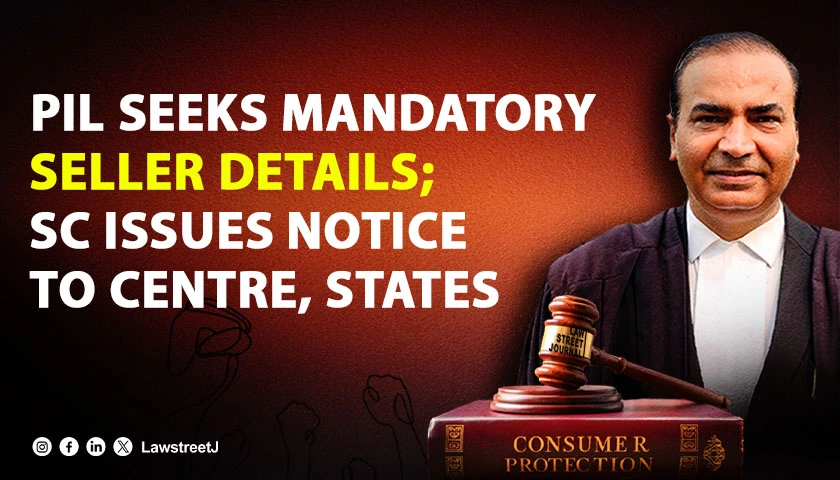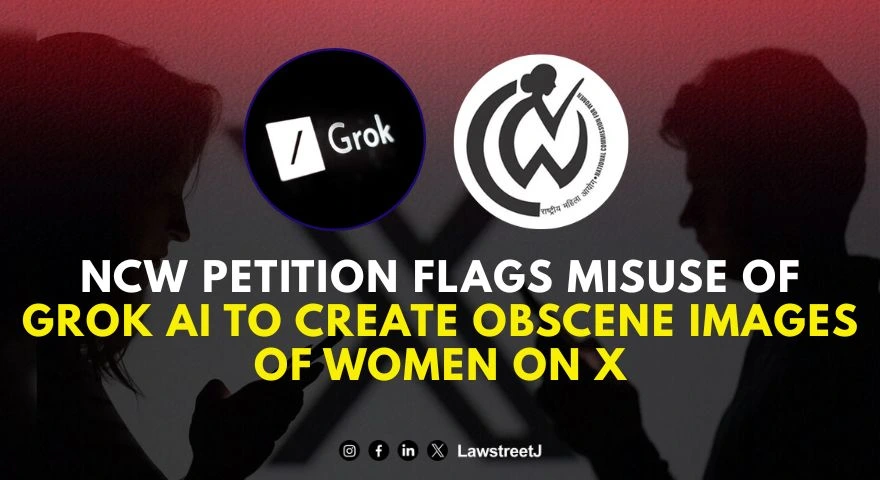New Delhi: This essay provides a comprehensive analysis of the legal framework surrounding consumer rights, focusing on the evolution of consumer protection laws, key consumer rights, enforcement mechanisms, and the challenges posed by globalization and digital technologies. It explores the fundamental rights of consumers, such as safety, information, choice, and redress, and examines the key legislation, case law, and international agreements that have shaped consumer protection across various jurisdictions.
The essay also delves into the difficulties regulators face in enforcing these rights, including resource constraints, cross- border disputes, and the rapid development of new technologies. Furthermore, it offers recommendations for strengthening consumer protection, such as harmonizing international standards, leveraging technology, and prioritizing consumer education. By assessing the current state of consumer rights and the challenges ahead, the essay aims to contribute to the ongoing discourse on enhancing legal frameworks to better protect consumers in an increasingly complex and digital marketplace.
Exploring the Legal Landscape of Consumer Rights: Evolution, Challenges and Future Directions
- An In-depth Analysis of the Legal Framework Surrounding Consumer Rights: A Global Perspective
Consumer protection has evolved into a critical legal and policy area in response to growing consumer needs, shifting market dynamics, and complex global trade systems. Consumer rights, traditionally focused on protecting individual buyers from unfair practices, now encompass broader issues, such as data protection, e-commerce security, and globalized disputes.
This essay examines the legal framework surrounding consumer rights across jurisdictions, highlighting key legislation, relevant case law, and the role of international agreements. It provides an overview of key rights such as safety, information, choice, and redress, explores enforcement mechanisms, and suggests strategies to enhance the effectiveness of consumer protection.
- The Evolution of Consumer Protection Laws
Consumer protection laws have evolved substantially over the past century. Historically, consumer rights were not seen as a major concern, and the legal framework primarily revolved around individual transactions. However, with the rise of industrialization, mass production, and globalization in the 19th and 20th centuries, the need for robust consumer protection became undeniable.
- Early Foundations: The Industrial Revolution
The Industrial Revolution brought forth dramatic changes to both production methods and consumer experiences. As mass production increased, so did the variety of products available to consumers. However, with this increase in supply came a rise in fraudulent practices, unsafe goods, and deceptive marketing strategies. In response, early consumer protection efforts sought to establish basic safety standards and limit fraud. The first laws, such as the Pure Food and Drug Act (1906) in the U.S., focused on regulating unsafe or misleading products, particularly in the food and pharmaceutical industries.
- Post-War Consumerism and Legislative Expansion
Post-World War II consumerism saw a dramatic rise in mass consumption and international trade, necessitating more comprehensive consumer protection legislation. Countries began to enact broader laws that extended beyond product safety to address unfair business practices, pricing, and advertising. The Consumer Protection Act (1987) in the UK and the Consumer Product Safety Commission (CPSC) established in the U.S. in 1972 are examples of the institutionalization of consumer rights during this period.
This period also witnessed the rise of the consumer rights movement, with figures such as Ralph Nader in the United States bringing greater attention to issues like product liability and corporate negligence.
- The Digital Age and New Frontiers
The advent of the internet and the rise of e-commerce in the late 20th and early 21st centuries marked a new era for consumer protection. The digital marketplace introduced unique challenges, such as data privacy concerns, cross-border disputes, and the difficulty of enforcing traditional consumer protection laws online. Laws like the General Data Protection Regulation (GDPR) of the European Union (2018) represent a significant leap in consumer rights, focusing on data privacy and the protection of personal information in the digital world.
- Key Consumer Rights: Safety, Information, Choice, and Redress
At the heart of consumer protection are several fundamental rights that serve as the foundation for legislation worldwide. These include the right to safety, the right to information, the right to choice, and the right to redress. The recognition of these rights is essential to any comprehensive consumer protection framework.
The Right to Safety
1 Consumer Protection Act 1987, GOV.UK, Artificial Intelligence and Consumer Protection , EUR. COMM'N,
The right to safety is perhaps the most critical consumer right, as it ensures that products and services meet minimum safety standards. Governments worldwide have implemented various safety regulations to protect consumers from harmful or hazardous products. For example, the U.S. Consumer Product Safety Act (1972) established a regulatory framework to ensure that products such as toys, household items, and appliances are safe for use. Similarly, in the EU, the General Product Safety Directive ensures that products entering the market do not pose risks to health or safety.
Consumer safety regulations have expanded to cover a wide range of areas, from food safety to environmental concerns. The scope of these protections continues to broaden as new consumer risks emerge, such as those posed by genetically modified foods, pharmaceuticals, and environmental hazards linked to manufacturing processes.
The Right to Information
Another cornerstone of consumer rights is the right to be informed about the products or services they purchase. The right to information ensures that consumers are not misled by false advertising, deceptive pricing, or hidden fees. Key regulations, such as the Consumer Rights Directive in the EU and the Truth in Advertising rules in the U.S., mandate that businesses provide clear, truthful, and accurate information about the goods and services they offer.
For example, food packaging laws require clear labeling of ingredients, nutritional content, and expiry dates. In the financial sector, laws require the disclosure of interest rates, fees, and terms before consumers sign contracts. The right to information is critical for empowering consumers to make informed choices and avoid exploitation in a marketplace flooded with complex products.
The Right to Choice
The right to choice allows consumers to select from a wide variety of goods and services without coercion or manipulation. This right is rooted in the principles of market competition, ensuring that businesses operate transparently and fairly. It includes the right to access competitive markets where consumers can compare prices and products. Competition laws, such as the Antitrust Act in the U.S. and the Competition Act in the EU, regulate monopolistic behaviours and promote a marketplace that encourages innovation and choice.
Over time, however, the concept of choice has extended to include digital choices. In the online environment, consumers are faced with a vast range of services and digital products. Legislative frameworks, such as the EU Digital Markets Act (2022), seek to regulate online platforms to ensure that consumers have genuine choices and are not subject to unfair business practices, such as being trapped by subscription s2 ervices or facing manipulative interface designs.
The Right to Redress
2 Consumer Product Safety Act of 1972, U.S. DEPT. OF COMMERCE, Consumer Rights Directive (2011/83/EU) , EUR. COMM'N UN Guidelines for Consumer Protection (1985),
The right to redress ensures that consumers have the means to seek remedy if their rights are violated. This includes the right to a refund, replacement, or compensation for defective products or services. Legal remedies for breach of consumer rights often take the form of civil litigation, class-action lawsuits, and alternative dispute resolution mechanisms such as mediation and arbitration.
International agreements, such as the UN Guidelines for Consumer Protection (1985), have emphasized the importance of accessible redress mechanisms. These guidelines encourage countries to establish effective complaint systems and ensure that consumers can seek justice efficiently and without undue cost.
- Challenges in Enforcing Consumer Rights
Despite the strong legal framework surrounding consumer protection, significant challenges remain in the enforcement of consumer rights. These challenges stem from various factors, including the complexity of global trade, resource constraints for regulators, and difficulties in adjudicating cross border disputes.
- Complexities of Global Trade
The global nature of modern commerce introduces complexities for consumer protection. Products and services cross national borders, often making enforcement of consumer rights difficult. For example, a product purchased online from a foreign retailer may not be covered by the consumer protection laws of the buyer's country, leading to confusion regarding warranty, liability, and dispute resolution.
To address these issues, international cooperation is essential. The UN Guidelines for Consumer Protection urge countries to collaborate on harmonizing consumer laws and facilitating cross-border dispute resolution. However, there remains a gap in the effective enforcement of these guidelines.
Resource Constraints for Regulators
Regulatory agencies responsible for consumer protection often face significant resource limitations. In many jurisdictions, these agencies struggle with inadequate funding, staffing, and technological capabilities to monitor and enforce laws effectively. Additionally, the sheer volume of consumer complaints and disputes can overwhelm regulatory bodies, making it difficult to provide timely resolutions.
To overcome these challenges, regulatory agencies must adopt more efficient mechanisms, such as digital platforms for consumer complaints and automated tools for identifying fraudulent practices. Strengthening international cooperation and coordination can also help regulators share resources and expertise.
- Technological and Digital Challenges
The rapid pace of technological advancement has created new challenges for consumer protection. The rise of e-commerce, digital advertising, and online services presents new risks, including data privacy concerns, online fraud, and unfair contractual terms. Moreover, the increasing use of artificial intelligence and algorithms in consumer-facing industries introduces further complications in terms of transparency, fairness, and accountability.
Regulations like the GDPR have made strides in addressing digital consumer protection, particularly regarding data privacy. However, the fast-evolving nature of digital technologies means that existing frameworks must be constantly updated to keep pace with new risks and challenges.
- Future Directions for Strengthening Consumer Protection
To address the challenges outlined above, several key measures can be taken to strengthen consumer protection laws and enforcement mechanisms in the future:
Harmonizing International Standards
As global trade continues to expand, harmonizing consumer protection standards at the international level is crucial. Initiatives like the OECD Consumer Policy Toolkit aim to align consumer protection frameworks across countries. Greater international cooperation is essential to address cross-border disputes, facilitate information sharing, and ensure that consumers worldwide are afforded similar protections.
Leveraging Technology for Consumer Protection
Governments and regulatory bodies can harness technology to improve consumer protection. Digital platforms that allow consumers to report issues, access legal resources, and track complaints can increase efficiency and reduce barriers to redress. Artificial intelligence and machine learning could be used to detect patterns of fraud and unfair practices in online markets, enabling quicker intervention by regulators.
Strengthening Consumer Education
Finally, consumer education must be a key priority. Empowering consumers with knowledge about their rights and responsibilities can mitigate many of the risks that arise in a complex marketplace. Educational programs, public awareness campaigns, and online resources can help consumers make informed decisions and avoid exploitation.
Conclusion
Consumer rights have evolved from simple safeguards against fraud to comprehensive protections covering a wide array of issues, from product safety to digital privacy. While significant progress has been made, the enforcement of these rights continues to face challenges due to globalization, technological advancements, and resource constraints. However, by harmonizing international standards, leveraging technology, and prioritizing consumer education, we can strengthen consumer protection frameworks and ensure that consumers are empowered to make informed decisions in an increasingly complex marketplace.
As consumerism continues to evolve, the legal framework surrounding consumer rights must adapt to address new risks and challenges, ensuring that consumers are protected in both traditional and digital markets. By doing so, we can help create a fairer and more transparent marketplace for consumers worldwide.3
3 The Law of Consumer Protection: In Search of a General Theory , 67 VA. L. REV. 1245, 1249 (1981). A New Role for Consumer Protection Law: Competition, Fairness, and Justice , 79 TEX. L. REV. 2263, 2278 (2001).
Disclaimer: The opinions expressed in this article are solely those of the author and do not necessarily reflect
the views of LawStreet Journal.


![SC affirms NCDRC's order holding hospital, doctor liable for deficiency in service for death of 27-yr-old B Tech graduate [Read Judgment]](/secure/uploads/2025/04/lj_7357_SC_affirms_NCDRCs_order.webp)








Neha Sharma Aug 11, 2025
🌍✊ In today’s global world, rights matter everywhere—even in the world of premium companionship. At West Delhi Escorts, we believe in fair treatment, privacy, and trust for every client.